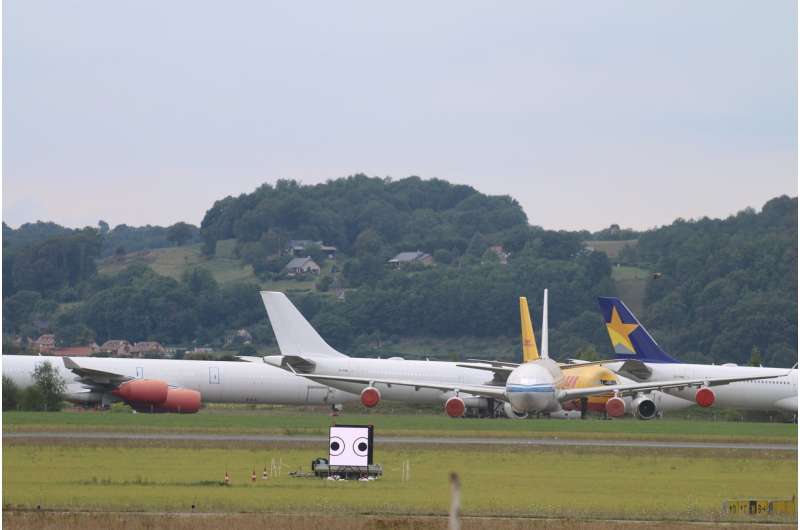Optical illusion spooks raptors

Researchers from the CNRS and Université de Rennes 1, in collaboration with Airbus, have designed a visual pattern that elicits long-term avoidance of high-risk areas by raptors. The work clears the way for further investigation into the visual cognition of these birds, and it has applications for conservation, because raptors are among the most common victims of collisions with planes and wind turbines. Their findings are published in PLOS ONE.
Despite their exceptional visual acuity, raptors cannot detect some obstacles like glazed surfaces, and are too late in detecting certain moving objects, like planes. In France, over 800 collisions of birds with planes are reported each year. As available deterrent systems are ineffective with raptors, scientists from the Éthologie Animale et Humaine (Ethos) research laboratory sought to develop a new means of repelling these birds from specific areas.
Applying current knowledge about vision in these species, the team first observed how captive raptors reacted to a series of visual stimuli. After over 300 tests, they concluded that only one pattern triggered avoidance behavior by virtue of an optical illusion. This 'superstimulus' consists of concentric black circles on a white background. It creates a so-called 'looming' effect, giving the birds the impression of an imminent collision.
The pattern was tested at Lourdes-Tarbes-Pyrénées Airport, near plains where raptors like buzzards and kites forage in the summer. It was displayed continuously throughout the day on two LED screens positioned in strategic locations, while a total of 8,800 observations were made at points all over the airport zone. The team detected a rapid modification of the birds' distribution: they stayed clear of areas from which the screens were visible. This avoidance behavior was still observable after five weeks of continuous pattern display.
The fact that the raptor population rose in places where the displays were out of view, at a time when their food supply was nonetheless abundant in all areas, is proof of the pattern's efficacy. Interestingly, the visual stimulus triggered similar behavior among corvids at the site, but not other passerines. These findings are the first to describe a harmless, sustainable solution for repelling raptors from high-risk areas. They also suggest new areas of research, such as the possible role played in this behavior by collision-detecting neurons, specialized in avoidance reactions.
More information: PLOS ONE (2018). DOI: 10.1371/journal.pone.0204802
Journal information: PLoS ONE
Provided by CNRS




















